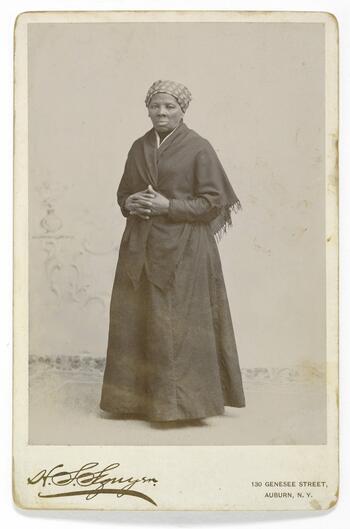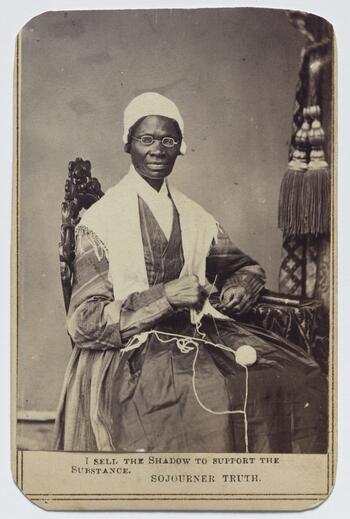The struggle against the institution of slavery served as a catalyst that brought abolitionists and women's rights activists together.However, the issue of race would eventually cause divisiveness in the suffrage movement. Race was as much of an issue for suffragists as it was for most people during the 1840s-1910s.
After the Civil War, the abolition and women’s rights movements continued to work together, now in a combined organization. The American Equal Rights Association, established in 1866 to promote universal suffrage, hired African American women speakers such as Louisa Matilda Jacobs to speak to audiences around New York State and beyond to convince them of the need for black men and all women to have the right to vote. After outlawing slavery with the 13th amendment, the United States Congress identified citizens as only men in the 14th amendment and enfranchised African American men with the 15th amendment, excluding women – white and black.
Divided over whether to support these advances for African American men at the expense of all women, the American Equal Rights Association split into two groups in 1869: the National Woman Suffrage Association, headquartered in New York by Elizabeth Cady Stanton and Susan B. Anthony, and the American Woman Suffrage Association, headquartered in Boston by Lucy Stone and Henry Blackwell. This split marks a difference in ideology.The NWSA opposed the 15th amendment (giving black men the vote) unless women were included. The AWSA, on the other hand, championed it. African Americans ended up in both organizations. For example, Sojourner Truth, Harriet Tubman, the Purvis family and Charlotte E. Ray joined with the National Woman Suffrage Association while Josephine St. Pierre Ruffin aligned with the American Woman Suffrage Association.
Portrait of a woman thought to be Louisa Matilda Jacobs. After the Civil War, Jacobs was hired by the American Equal Rights Association to speak to audiences in New York State and convince them of the need for black men and all women to have the right to vote. Courtesy of Jean Fagan Yellin via the South Central Regional Library Council.
Portrait of Harriet Tubman, circa 1885. Tubman toured New York, Boston and Washington speaking in favor of women’s suffrage rights. Courtesy of the National Portrait Gallery.
Sojourner Truth, 1864. Born into slavery in New York State, Truth became one of the strongest voices for equality and justice in the abolitionist and women's suffragist movement. Her most famous speech, "Ain't I a Woman?" was given at the Women's Rights Convention in Akron, Ohio, 1851. Courtesy of the National Portrait Gallery.
Mrs. Josephine St. Pierre Ruffin, 1900. Ruffin was a social activist active in the abolition, women’s suffrage, and temperance movements. Courtesy of the New York Public Library.


